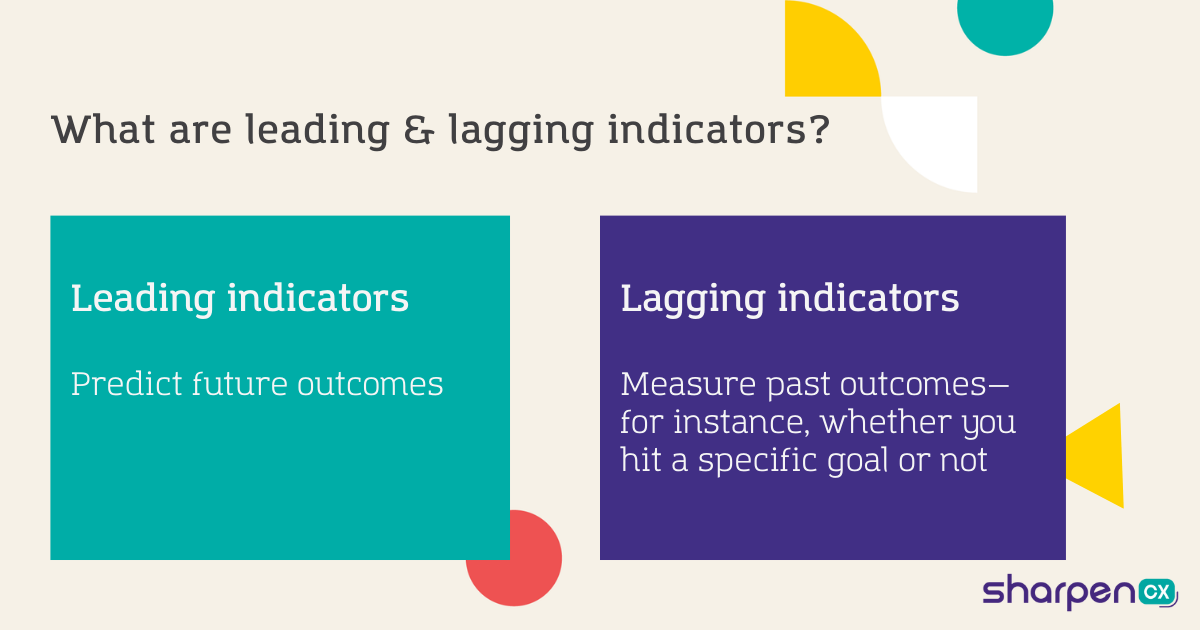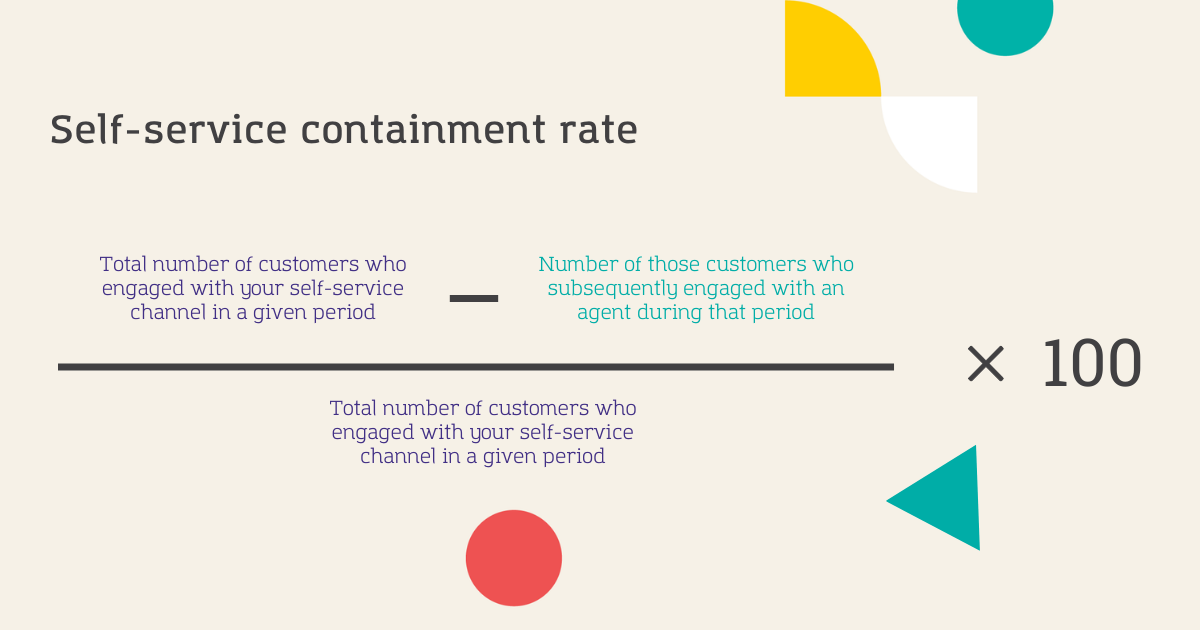
Top 3 Contact Center Metrics to Measure in 2024
We’ve all seen it—contact center scorecards that look more like laundry lists and dashboards that look more like Sudoku puzzles. You can measure many metrics in your contact center, but just because you can doesn’t mean you should.
We know it’s tempting. After all, data and analytics are the lifeblood of your contact center’s success. You can’t improve what you can’t measure or measure what you don’t track.
And with so many competing priorities across operations, customer experience, and employee performance, it can be hard to hone in on the metrics that actually matter. In the vein of “less is more,” we’ve narrowed the list to the top three contact center performance metrics we think you should measure in 2024. All three significantly impact both employee and agent experience and are leading indicators to some critical outcomes.
Self-service containment
Self-service is on the rise and will only continue to increase as digital natives become the lion’s share of the global population. 62% of millennials and 75% of Gen-Z customers prefer self-service, even when contacting support is an option. Customers want the flexibility to find answers and perform transactions wherever and whenever they want.
However, many companies still fall short of customer expectations regarding self-service. Only 13% of customers experienced complete resolution of their issue or question through self-service, and the remaining customers required additional agent support.
Although we can blame shortcomings in self-service’s capabilities for this inability to wholly resolve customers’ issues, these failures are also partly due to the “set it and forget it” approach taken by many contact centers. Even the best, most intelligent AI-powered self-service solutions must be continuously tracked, monitored, and improved.
Your self-service containment rate measures how successfully your self-service channels answer customers’ questions and how effectively they meet their needs. It’s the percentage of customers who satisfactorily start and end their interaction within a self-service channel and don’t need to elevate to an agent.
You can calculate your self-service containment rate as:
You can calculate your self-service containment rate, or as we like to call it, self-service success, on a cumulative level across all your self-service channels and on a per-channel basis. For example, you can track FCR for your interactive voice response (IVR) system, chatbot, knowledge base, etc.
Self-service is a leading indicator of customer satisfaction, effort metrics, and agent efficiency.
Effective self-service execution can increase brand loyalty and satisfaction. It also positively impacts agent-related metrics, like retention, by eliminating mundane, repetitive tasks from their workload.
Discover additional contact center analytics best practices with our new eBook.
Data Dynamics: A Practical Guide to Unleashing the Power of Contact Center Analytics
Agent engagement
As the “face” of your company, agents are a critical ingredient to the customer experience. And while we all want to improve the customer experience, we often overlook how agents impact customer satisfaction and overall contact center business outcomes.
Ask any contact center leader their customer satisfaction score (CSAT) or average handle time (AHT), and they can tell you. But their agent engagement score? Probably not.
That doesn’t mean it’s not on their minds, though. 47% of managers indicate that high agent turnover and absenteeism are their most significant challenges in effectively and efficiently operating a call center.
Although standard operational metrics like average handle time (AHT), number of interactions handled, and wrap-up time are “agent” metrics, they focus on their output, not the individual behind the number.
That’s why generating an agent engagement score for your contact center is so valuable—and critical. It’s a leading indicator of agent turnover, and by proactively monitoring and taking action to improve agent engagement, you can improve your agent retention. Agent engagement also influences customer satisfaction, and 78% of contact center senior leaders feel that agents play a pivotal role in customer retention.
While agent engagement might sound hard to measure and calculate quantitatively, it’s actually straightforward.
Regularly conduct anonymous surveys asking agents direct questions about their:
- Job satisfaction
- Likelihood to recommend their job to friends
- Empowerment
- Wellbeing and work-life balance
- Perception of growth and learning opportunities
- Perceived contribution to the team and company
- Top challenges
We recommend keeping the survey short and sweet and using a sliding response scale similar to a net promoter score (NPS) or a multiple-choice survey.
You can supplement your quantitative engagement insights with regular qualitative data points gathered from 1:1s and team conversations, but avoid including too many open-ended questions in the survey. Too many qualitative questions can make it harder to analyze and interpret, making regular monitoring cumbersome and unsustainable.
The latter is essential, as consistency is critical when measuring agent engagement. Like all metrics, you should continuously track and monitor agent engagement at least quarterly. But unlike operational metrics, NOT measuring it can have a direct negative impact on the outcome. Starting agent engagement initiatives and not seeing them through gives agents the impression that you don’t care—ultimately hurting what you set out to improve.
Too many contact centers fumble when measuring agent engagement by overcomplicating it and creating complex formulas based on escalation rates, training investment, absenteeism, etc. Running a contact center is complicated enough. Do yourself a favor, keep it simple, and don’t try to read agents’ minds—just ask!
First contact resolution
Nobody likes engaging with a company multiple times on the same issue. When customers don’t get their problems solved and questions answered correctly the first time, customers feel that you don’t value their time, leading to frustration and negative satisfaction.
Conversely, resolving inquiries and issues the right way the first time can increase brand loyalty. 73% of consumers feel that brands valuing their customers’ time is a sign of good customer service experiences.
That’s why our third must-have contact center metric for 2024 is first contact resolution. First contact resolution reflects customer effort and is a leading indicator of CSAT, NPS, and customer retention. It also provides insight into the effectiveness of your contact center processes, knowledge base, and agent training and toolset.
FCR measures the percentage of interactions effectively resolved on the first contact. For an interaction to count towards FCR, the customer doesn’t require any follow-up on the initial contact reason within a given time frame, like 1, 3, or 7 days.
An alternative or complement to FCR is its cousin, active contact resolution (ACR). This metric, unique to the Sharpen platform, can help you understand an individual agent’s ability to solve problems.
ACR measures the percentage of your agent’s interactions that don’t require a customer to engage with you on the same issue within a given time frame, like 1, 3, or 7 days. It measures your agents’ ability to solve the problem during their interaction rather than gauging performance on the customers’ interaction history with a host of other agents.
FCR and ACR provide invaluable insight into how easy it is for customers to interact with your contact center and company.
Own your outcomes with Sharpen
Options abound regarding contact center metrics, and you’ll likely monitor many in 2024. That’s great—as long as self-service containment, agent engagement, and FCR are at the top of your scorecard. Save your team from analysis paralysis and keep it simple by focusing on these three leading indicators that provide insight into agent performance and customer experience.
Take action today with your data today.




